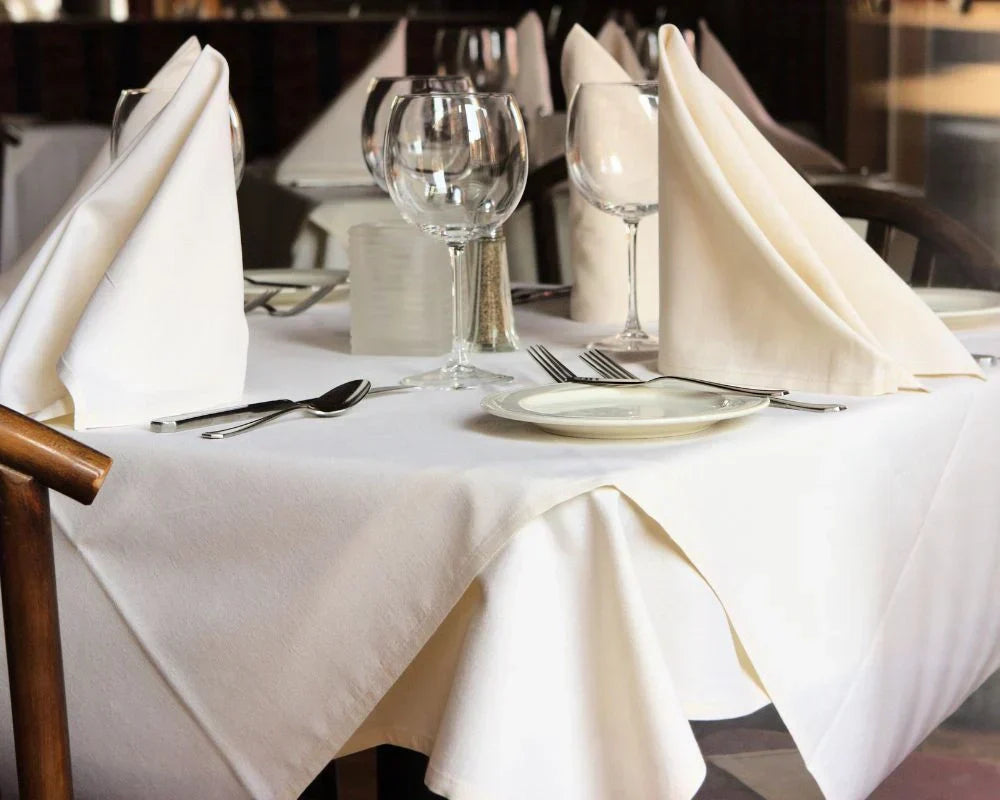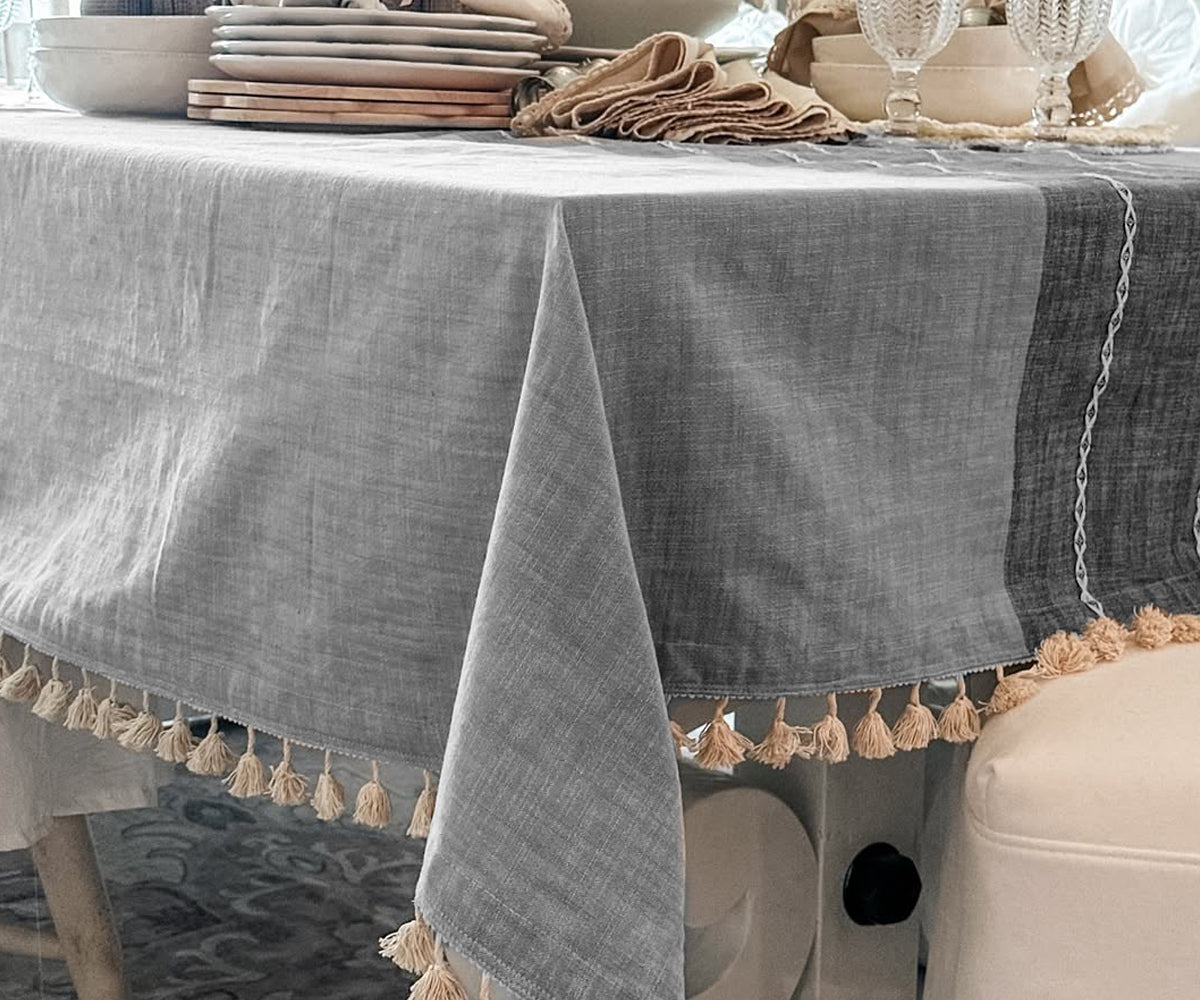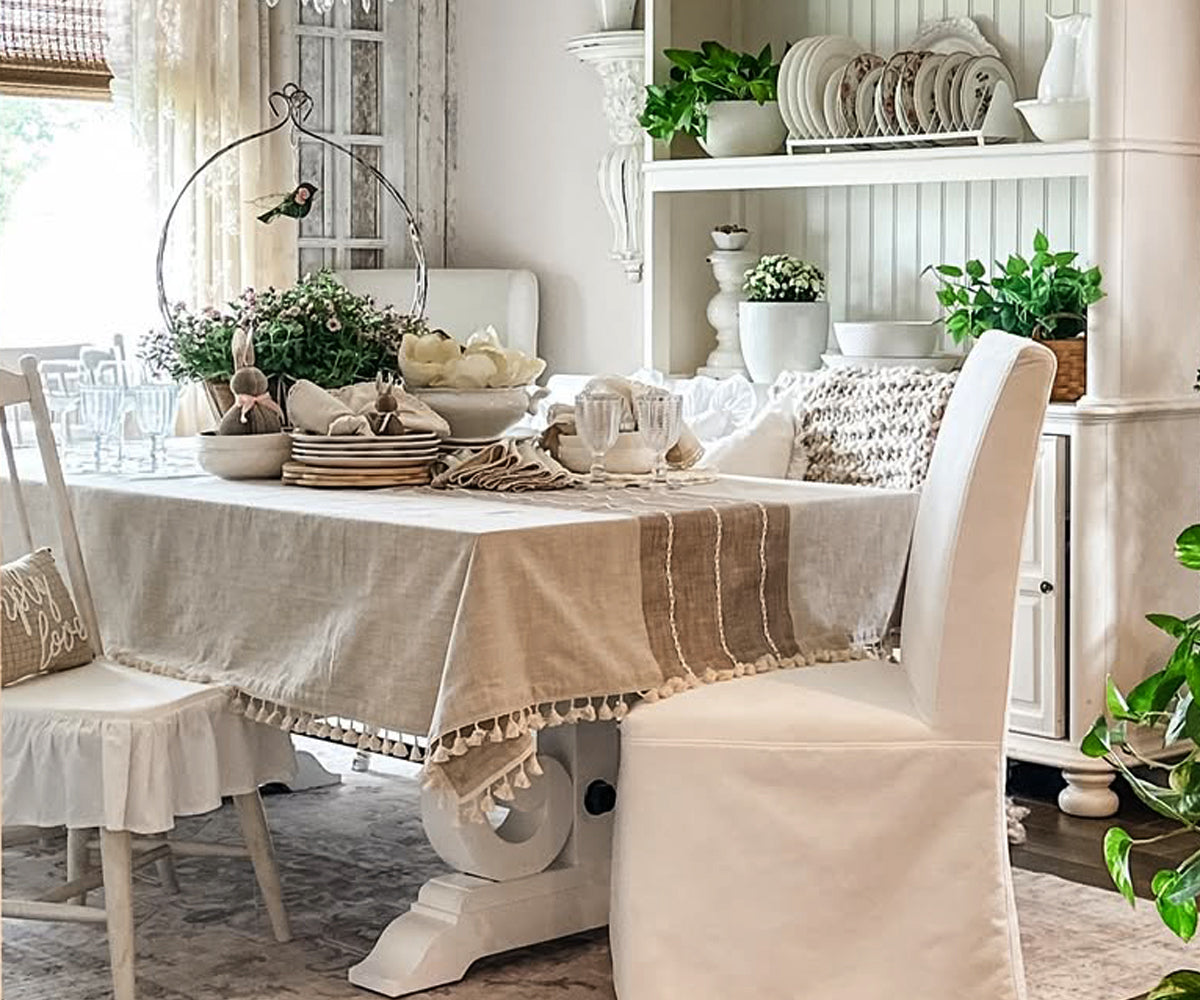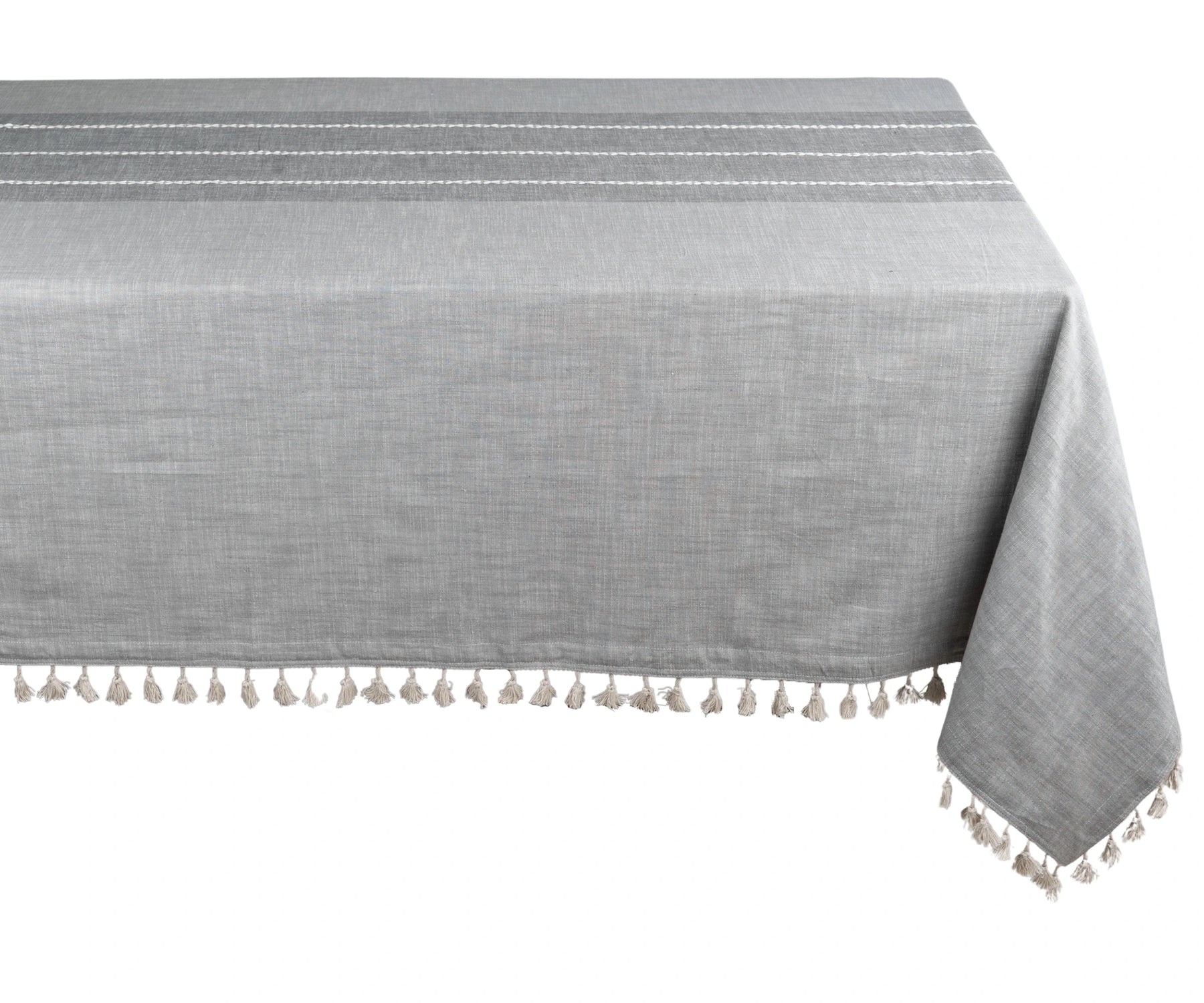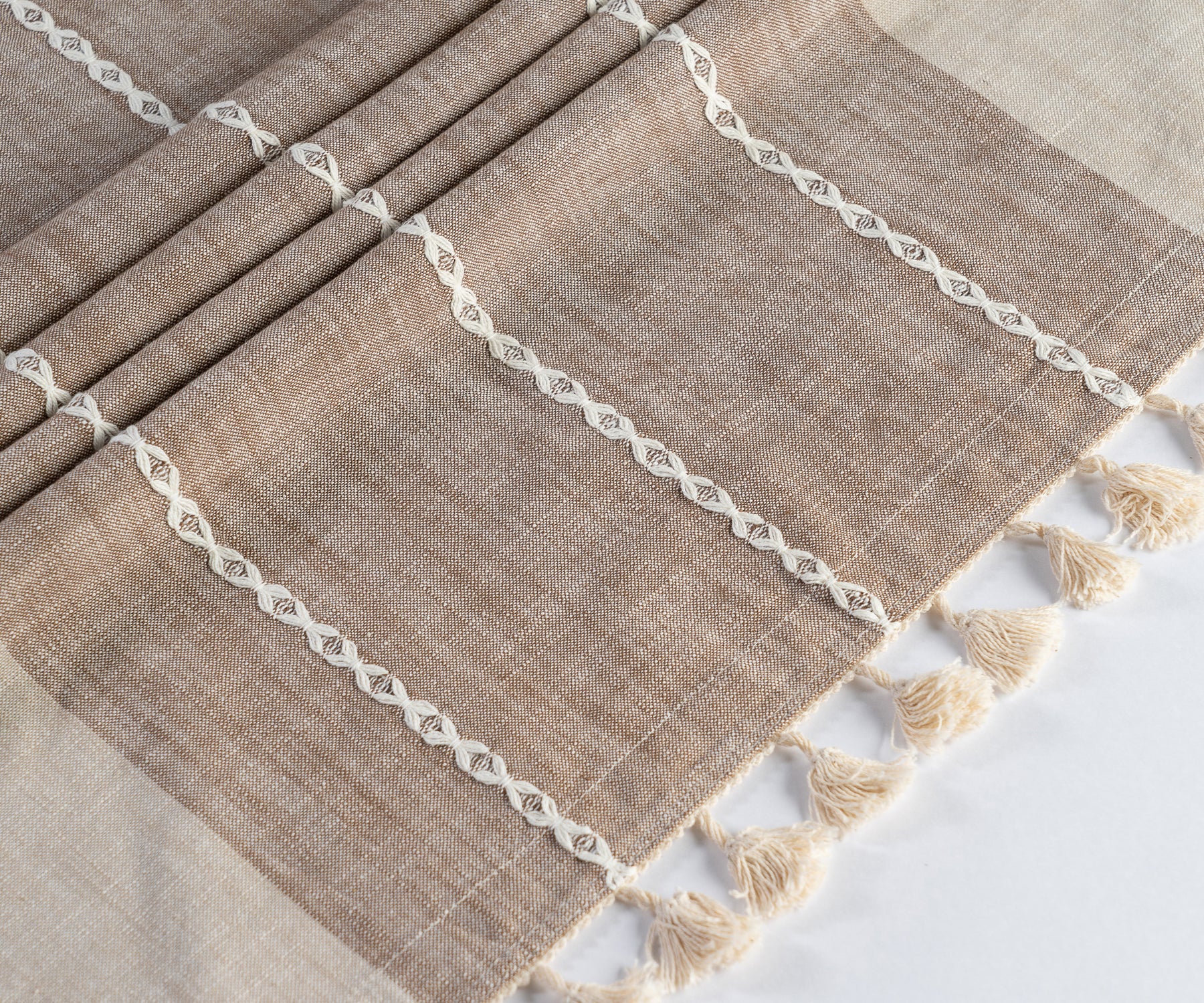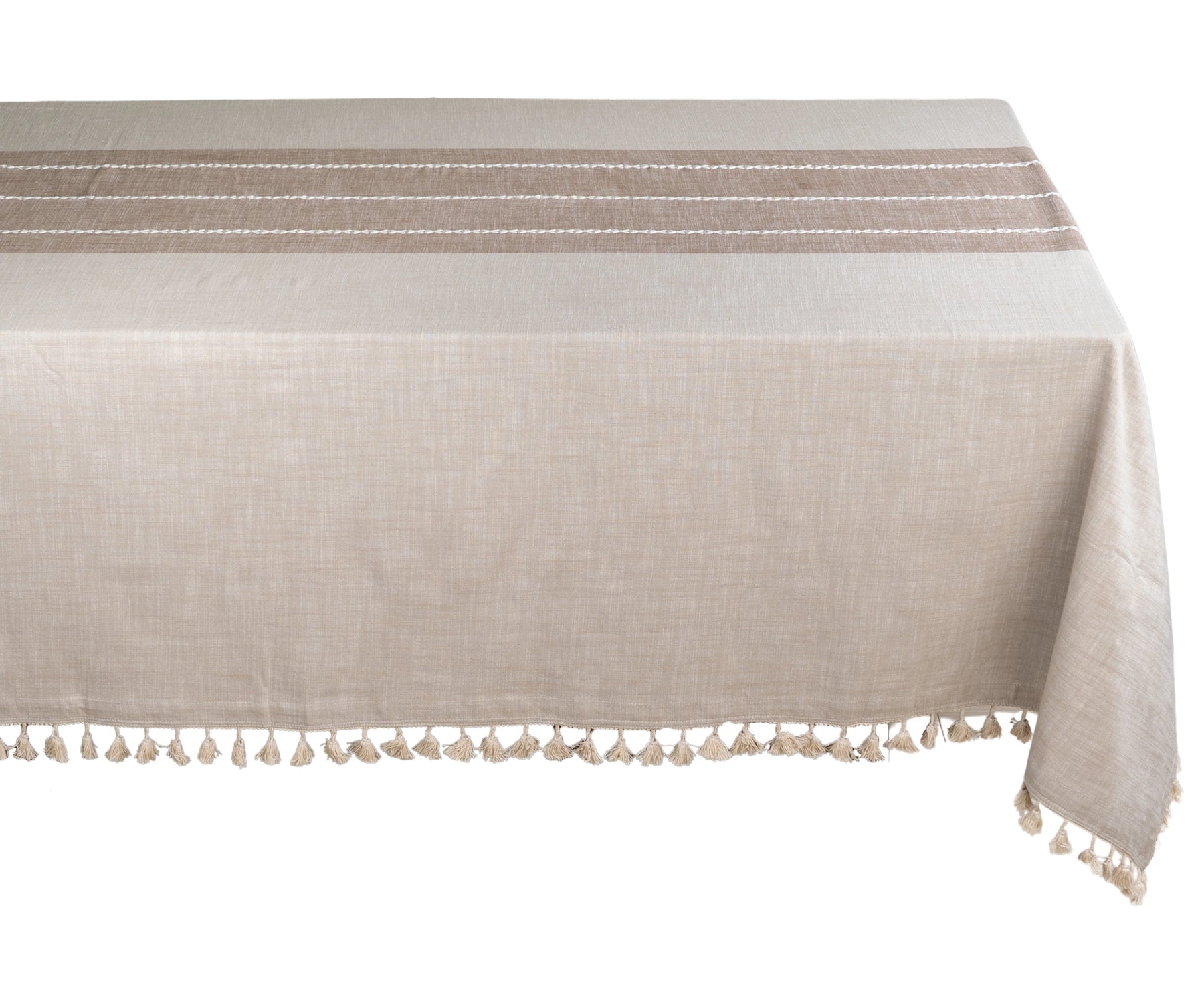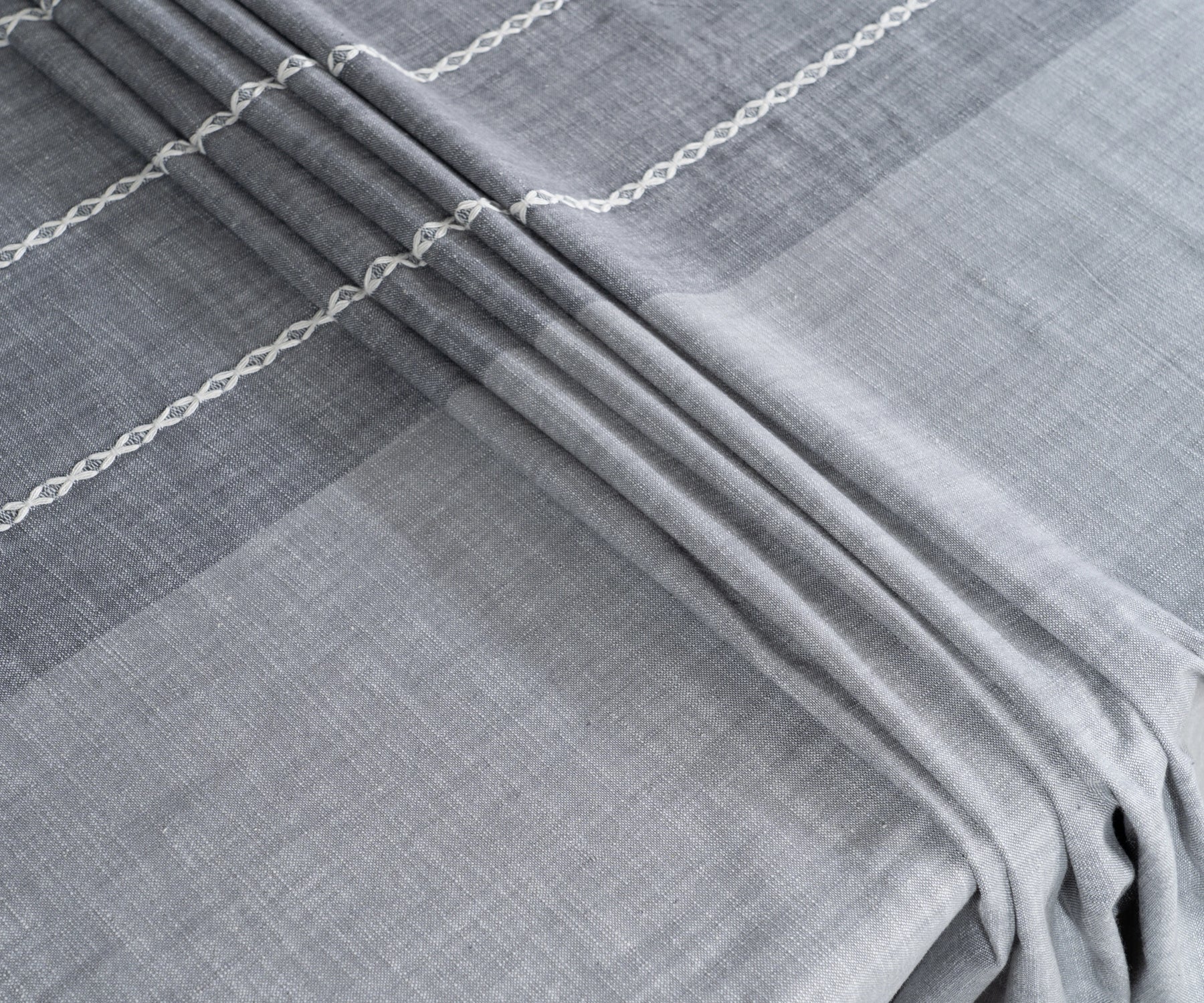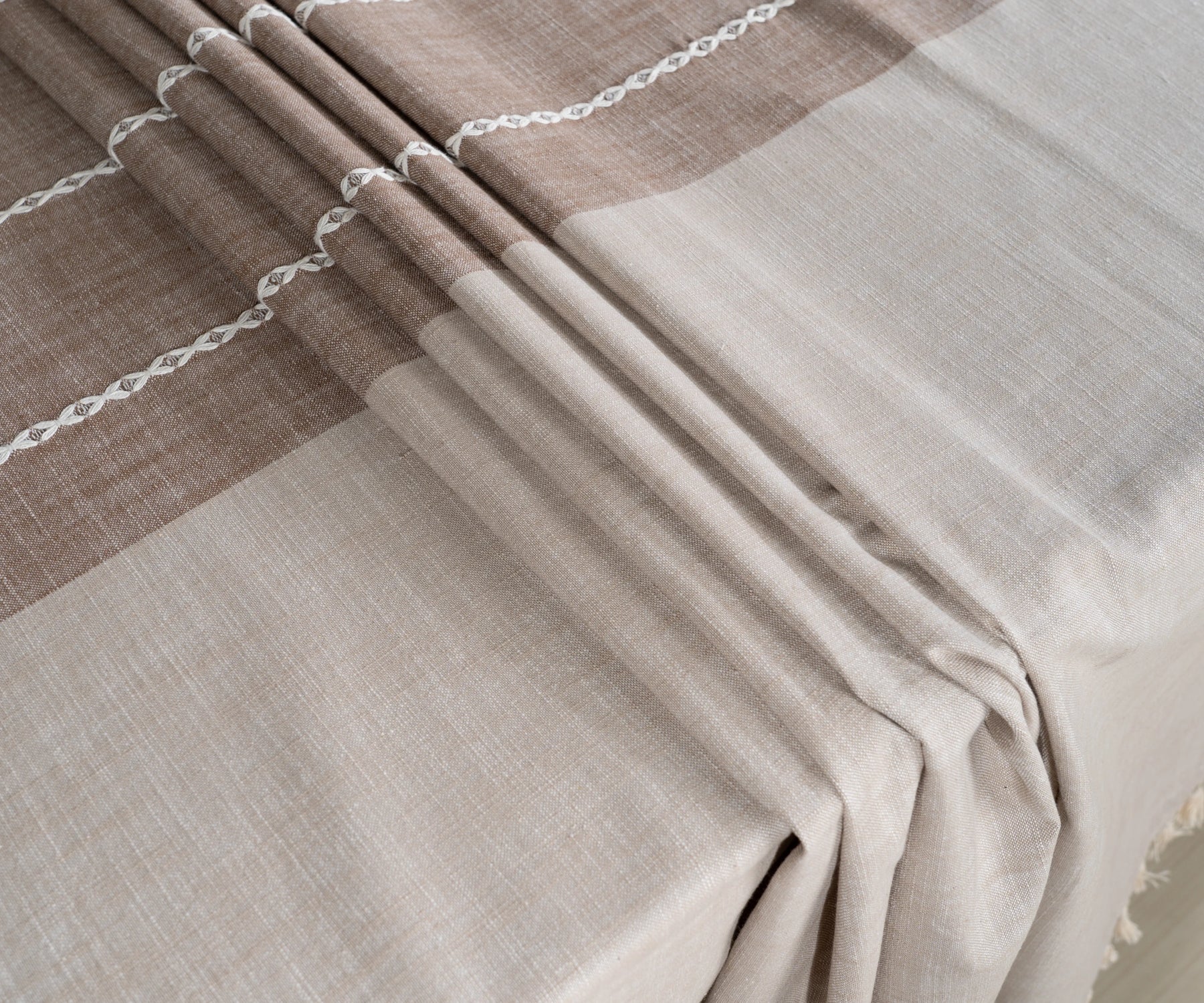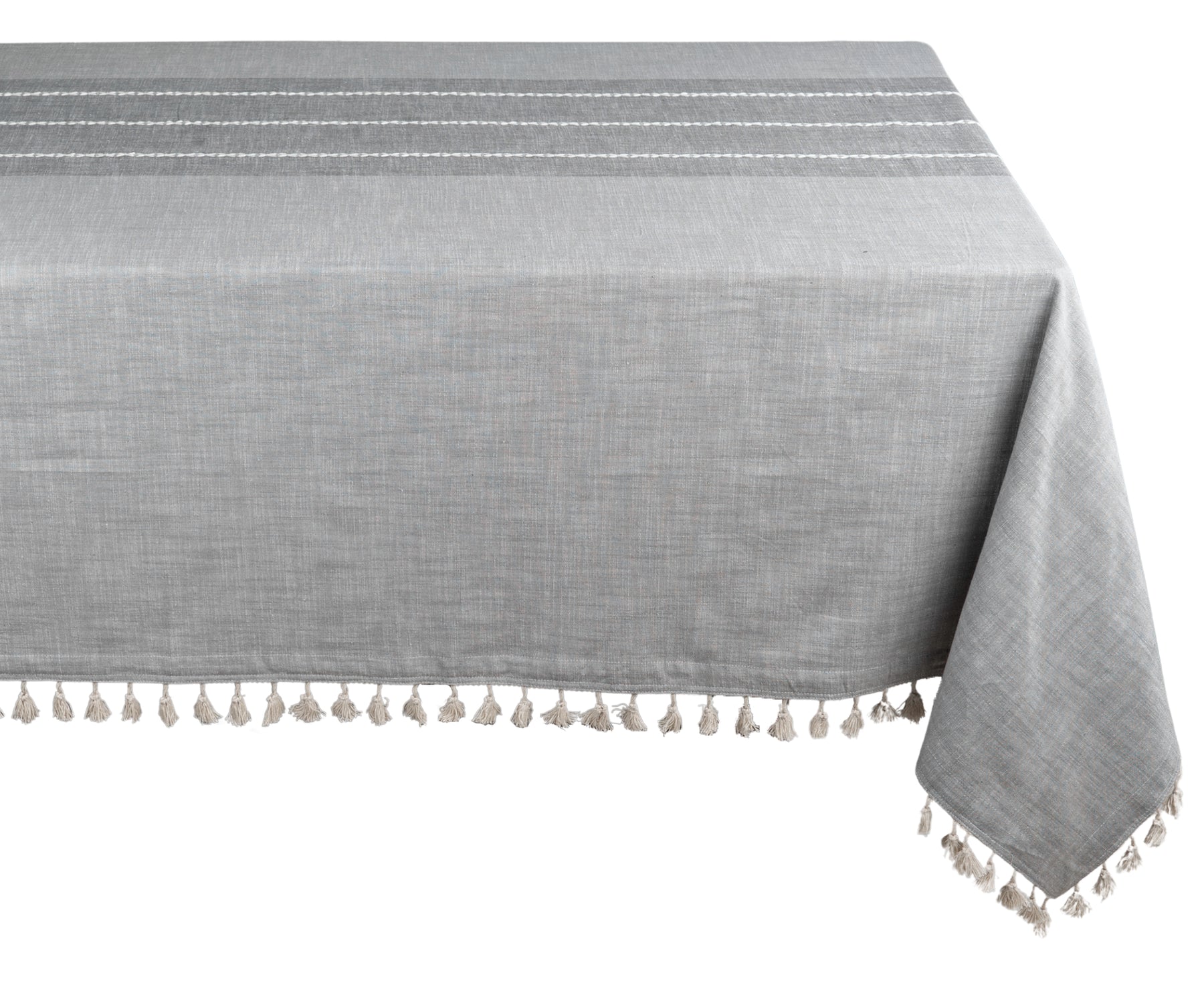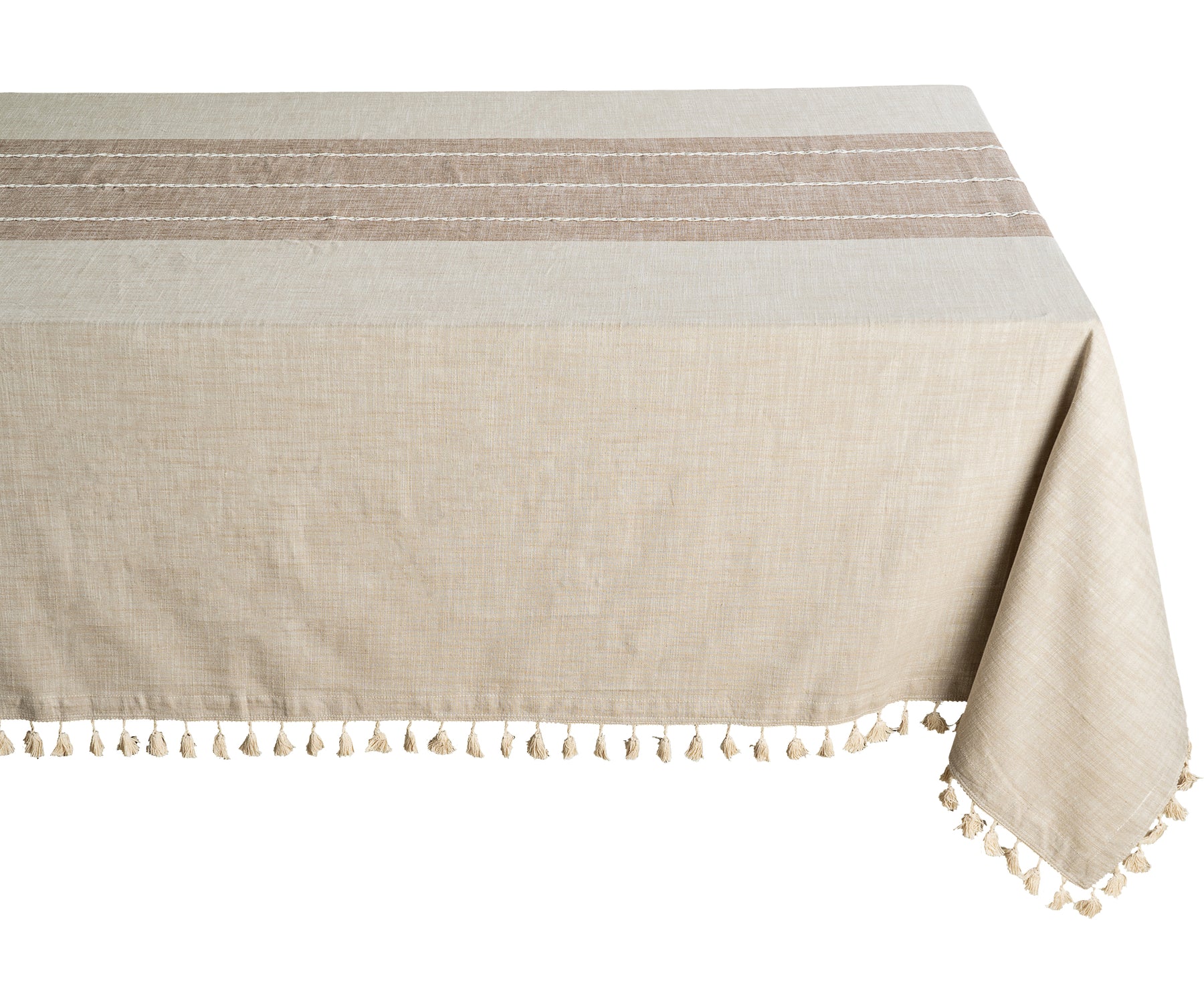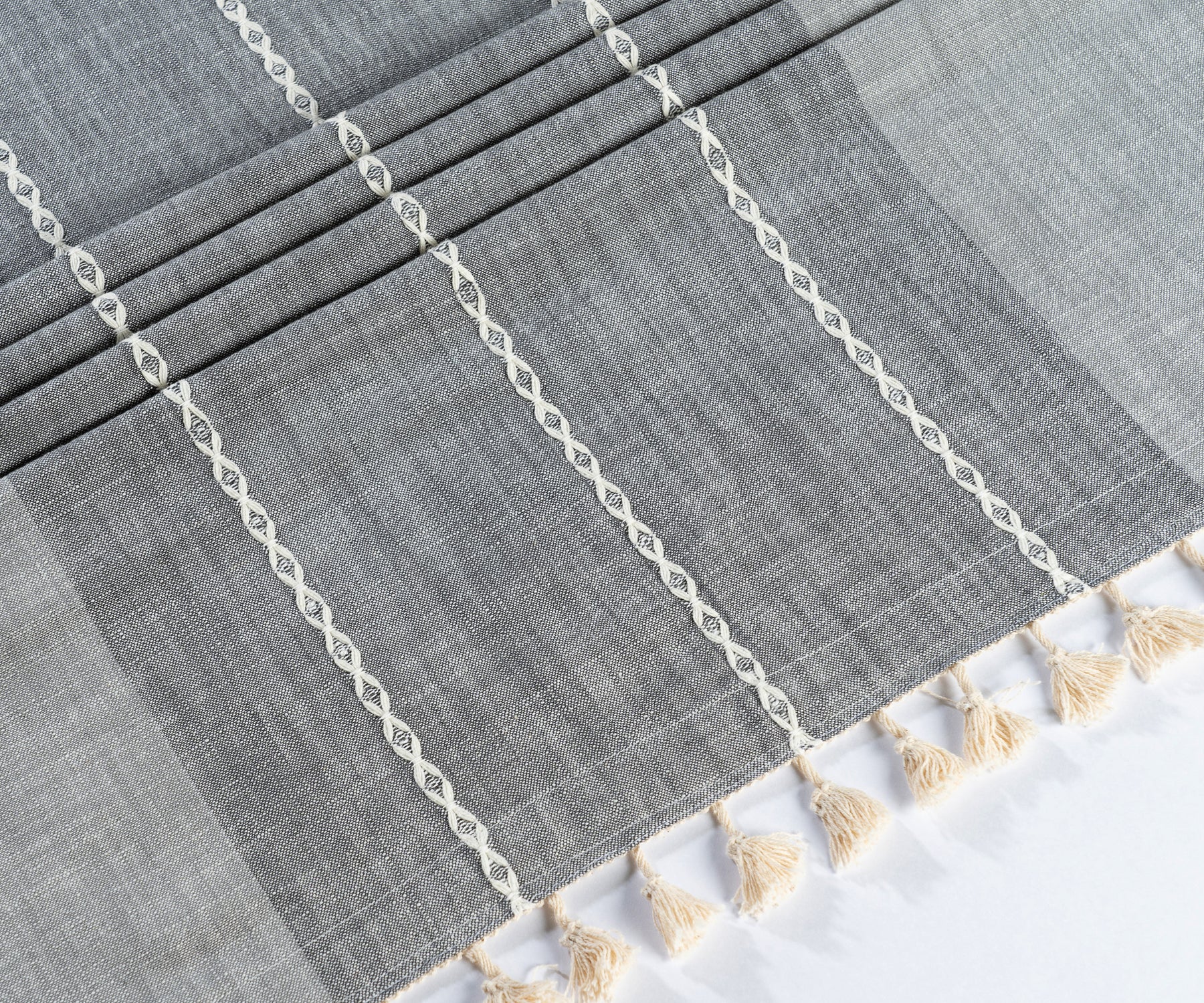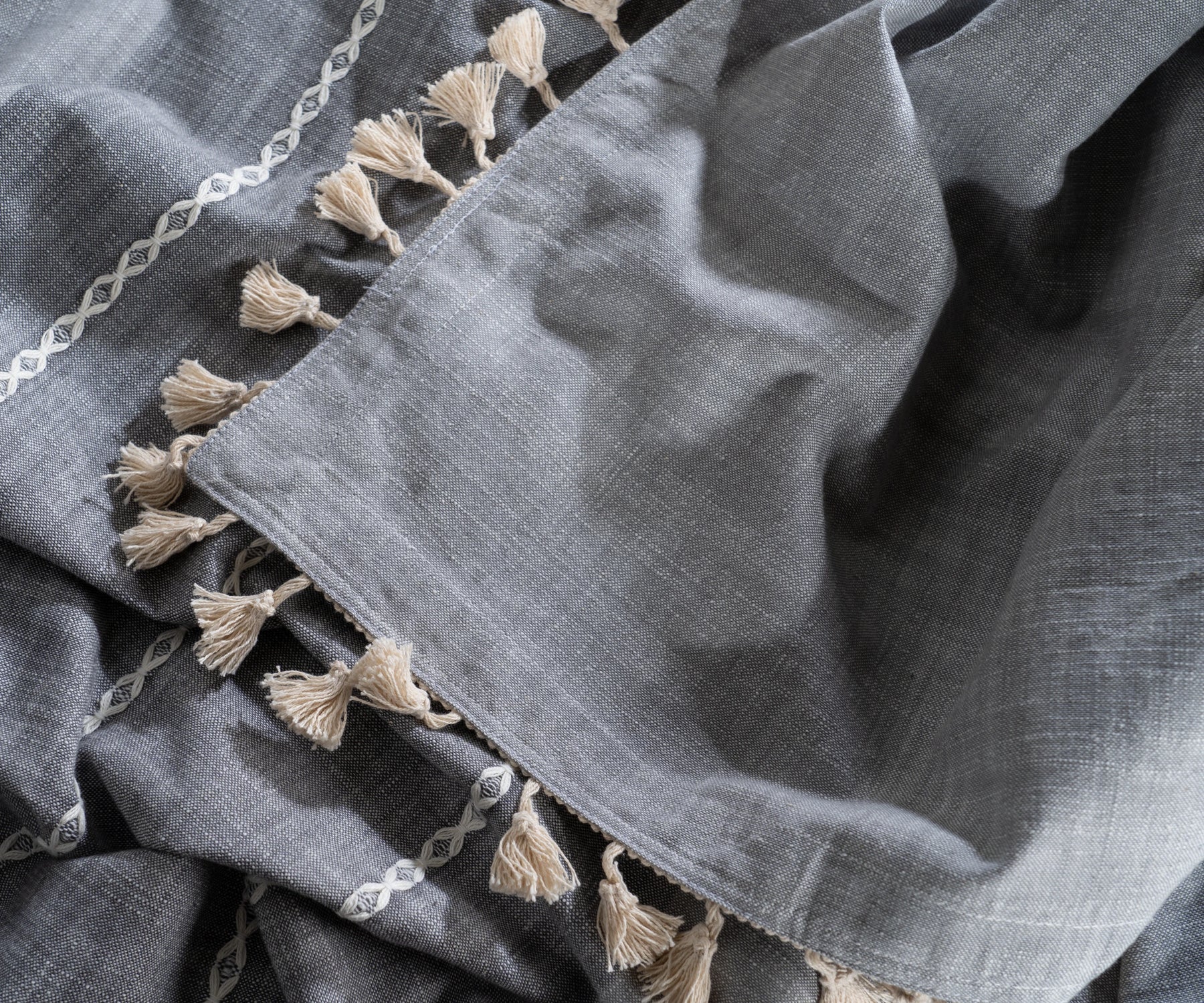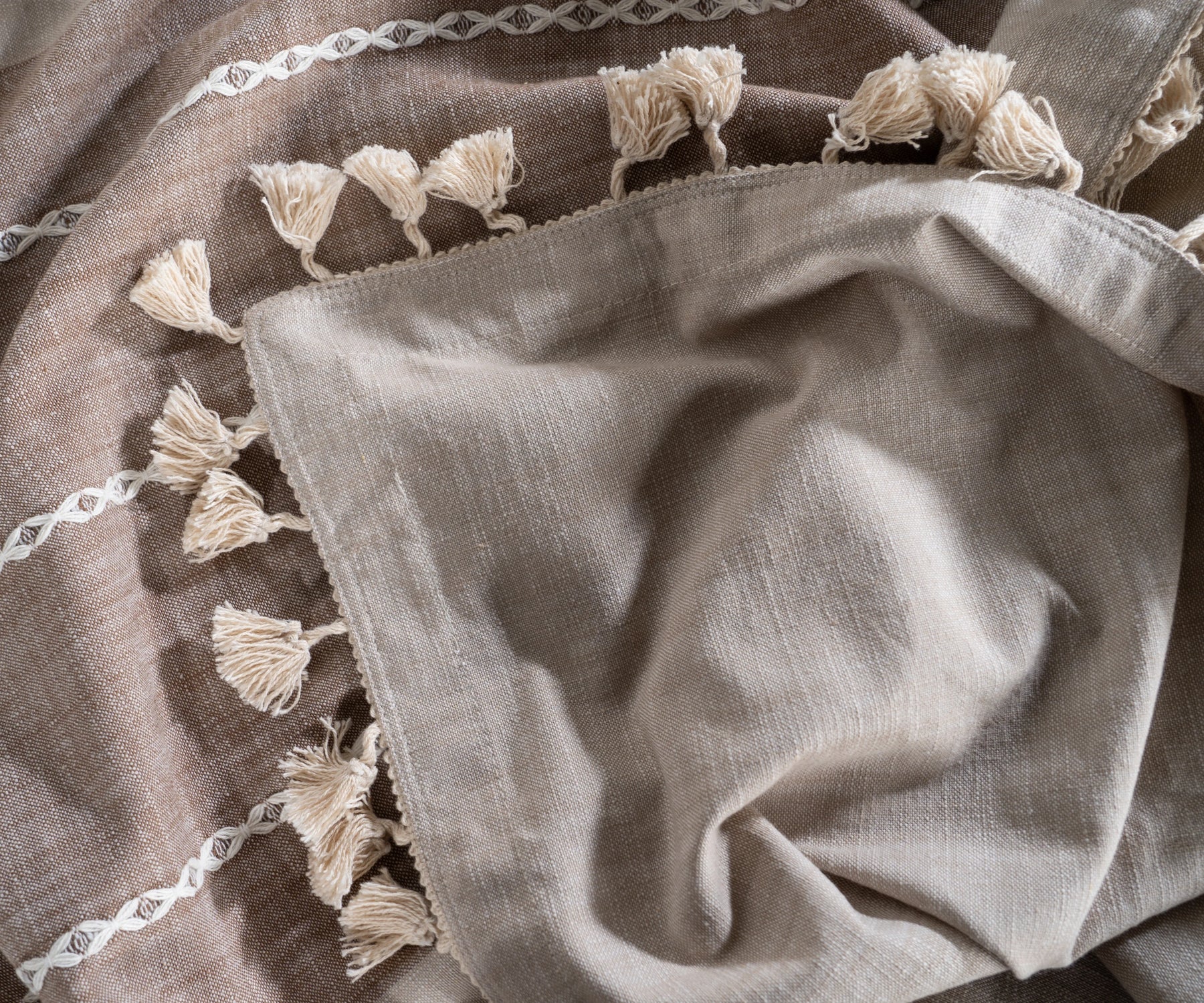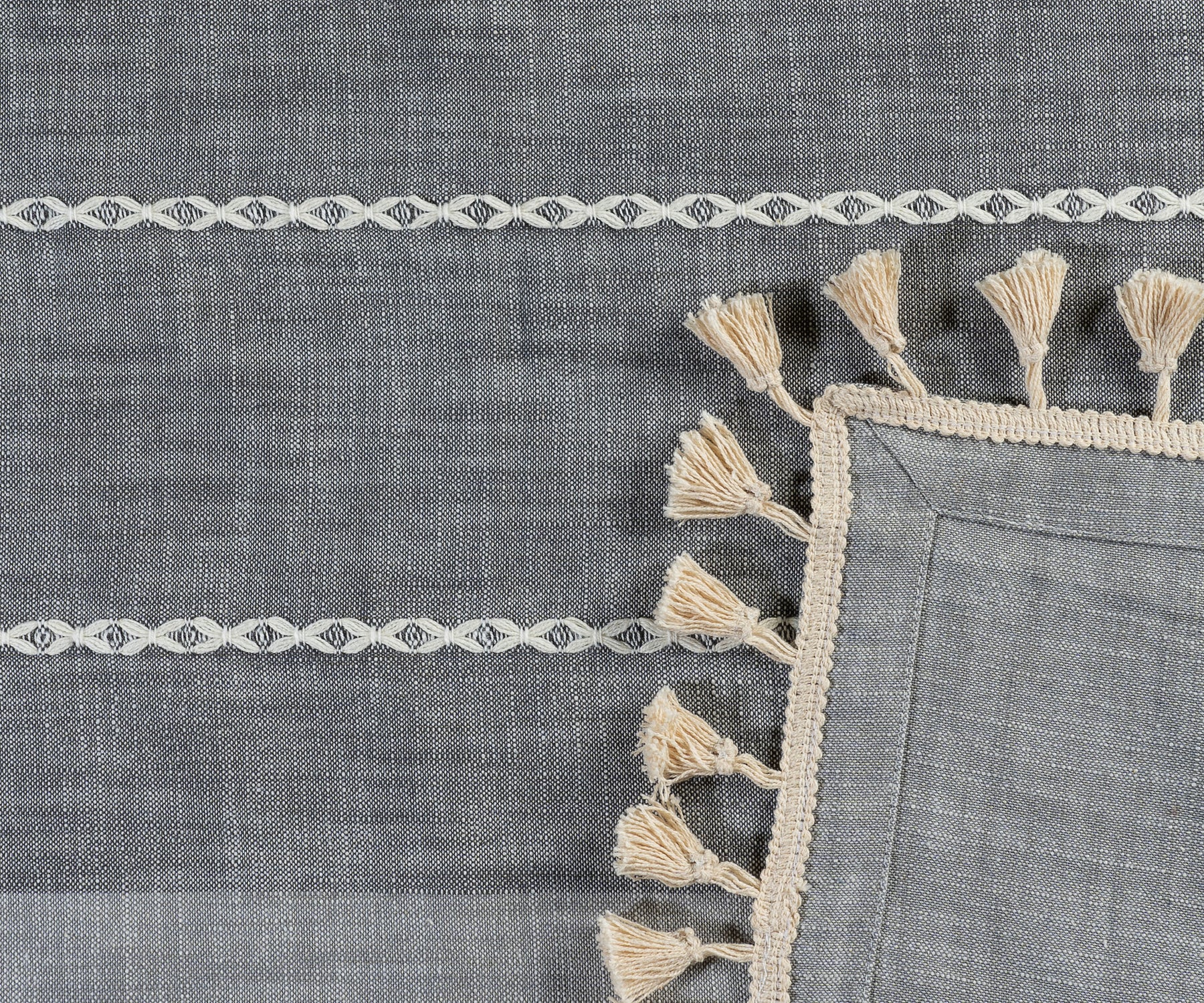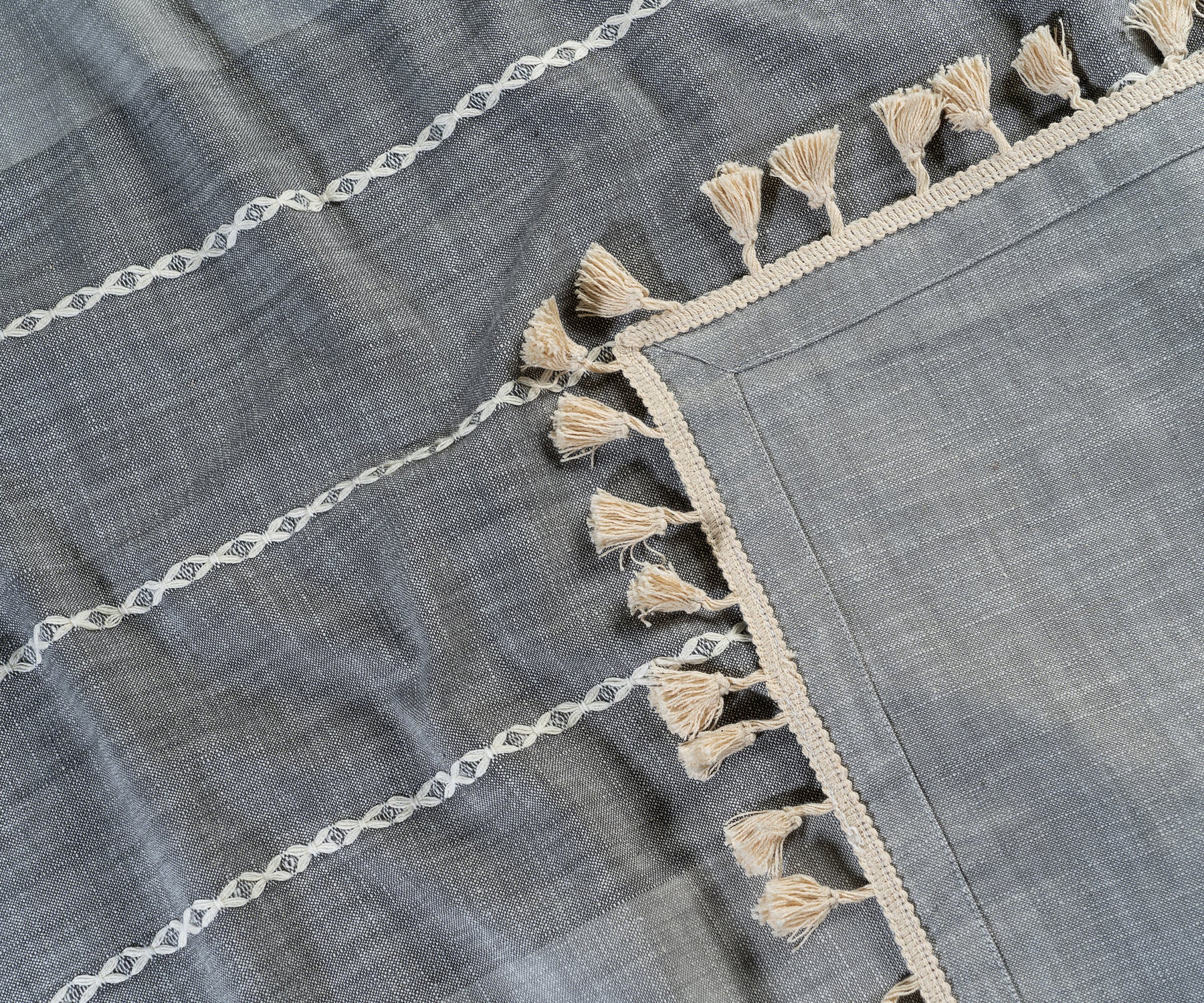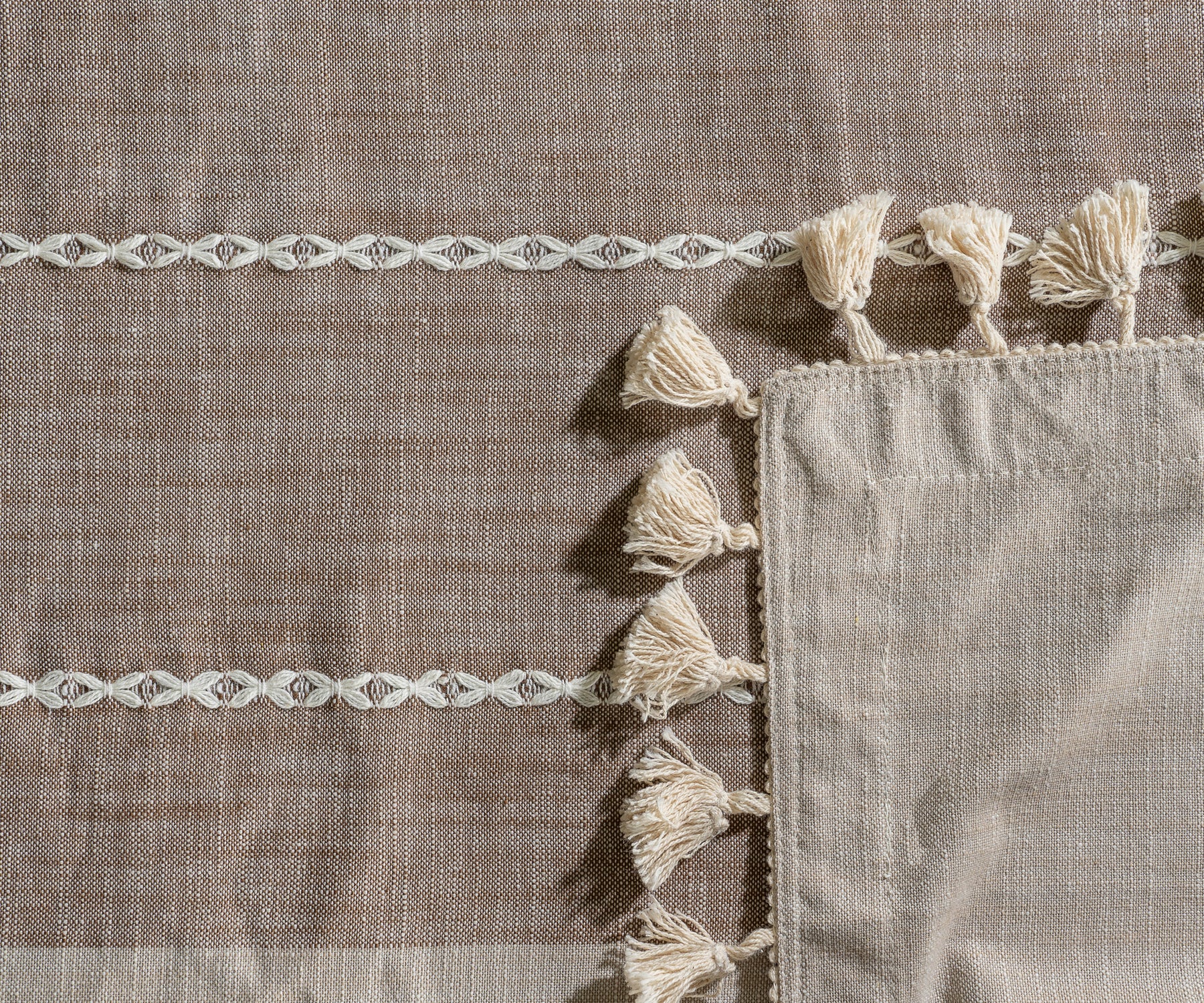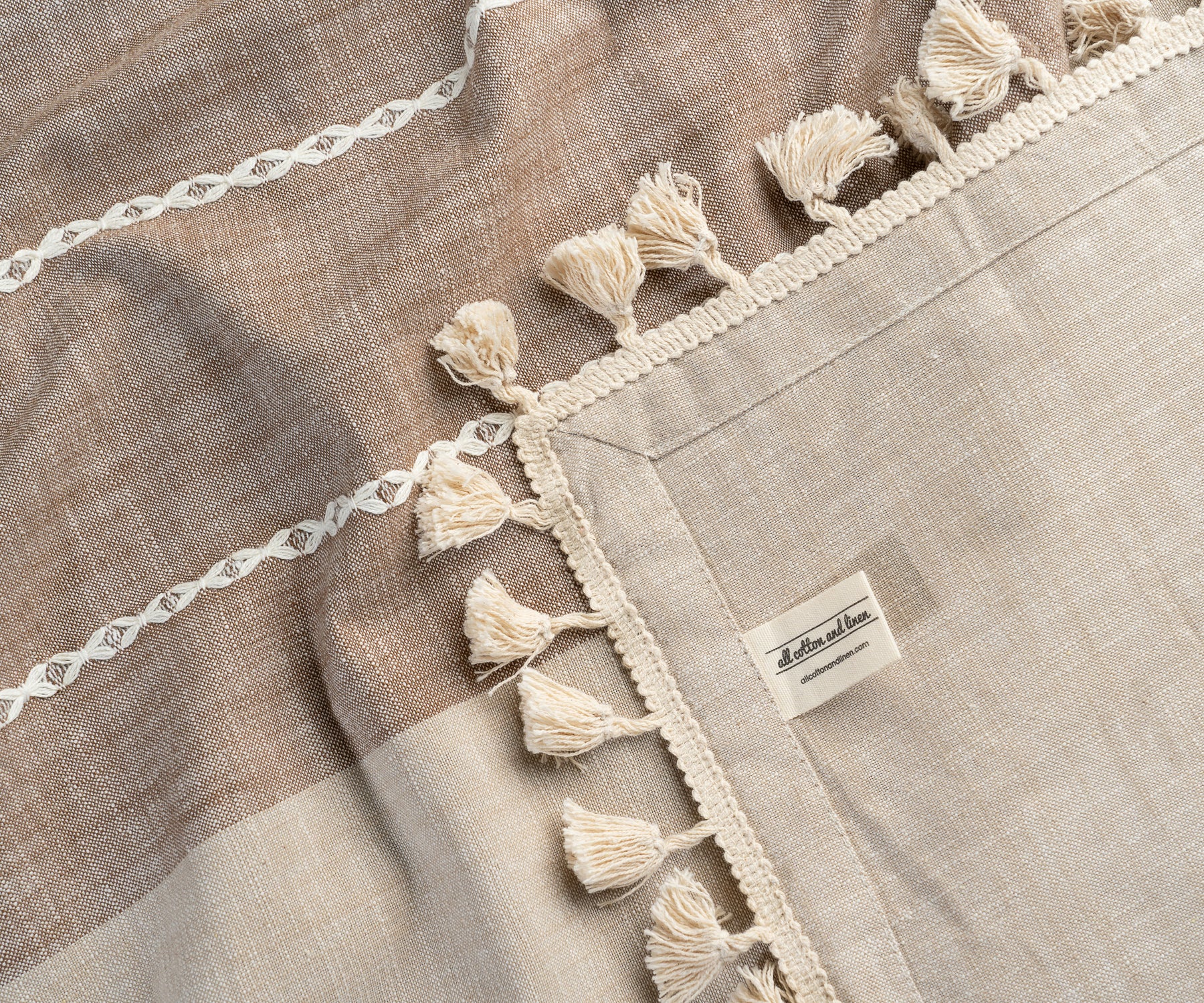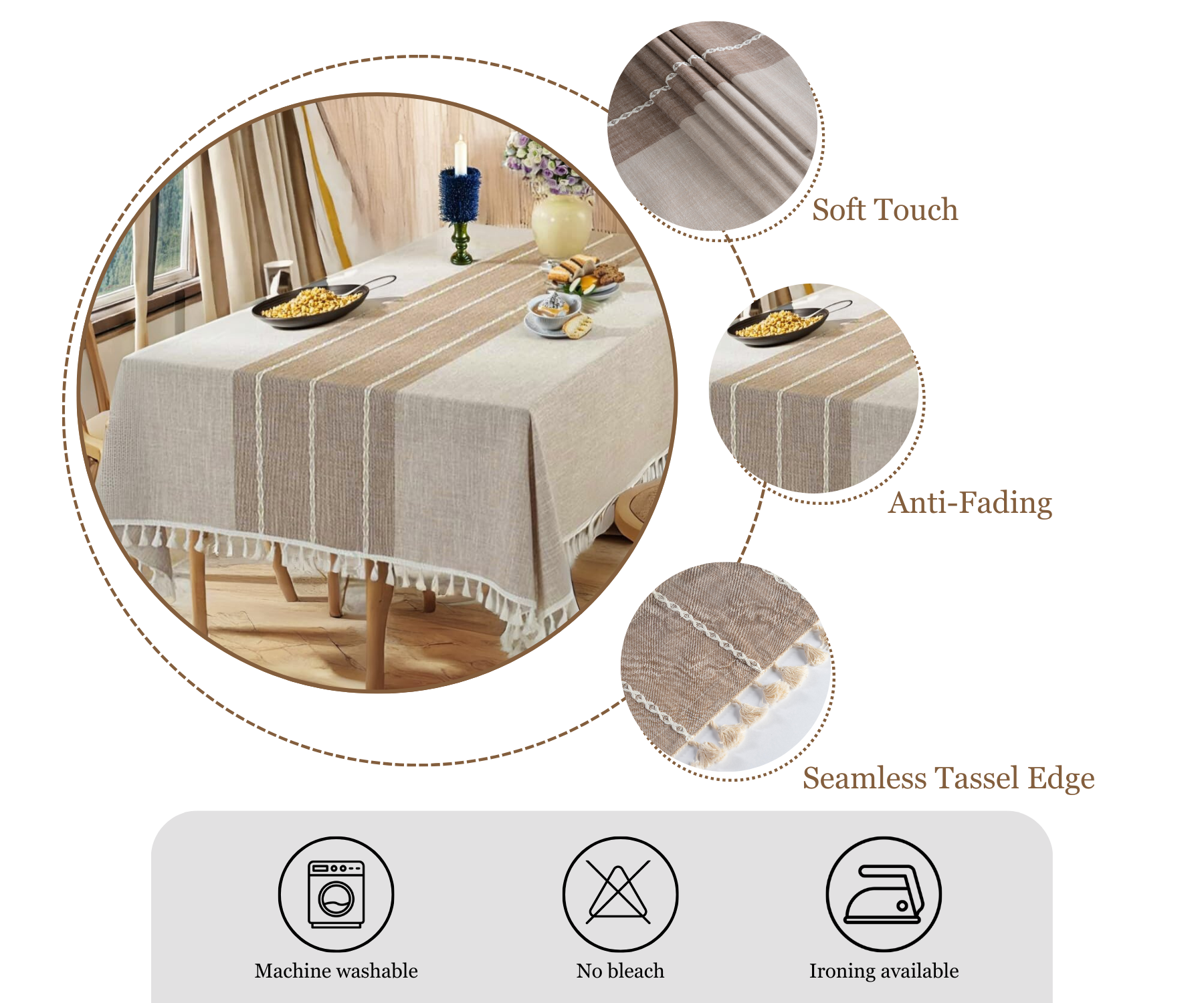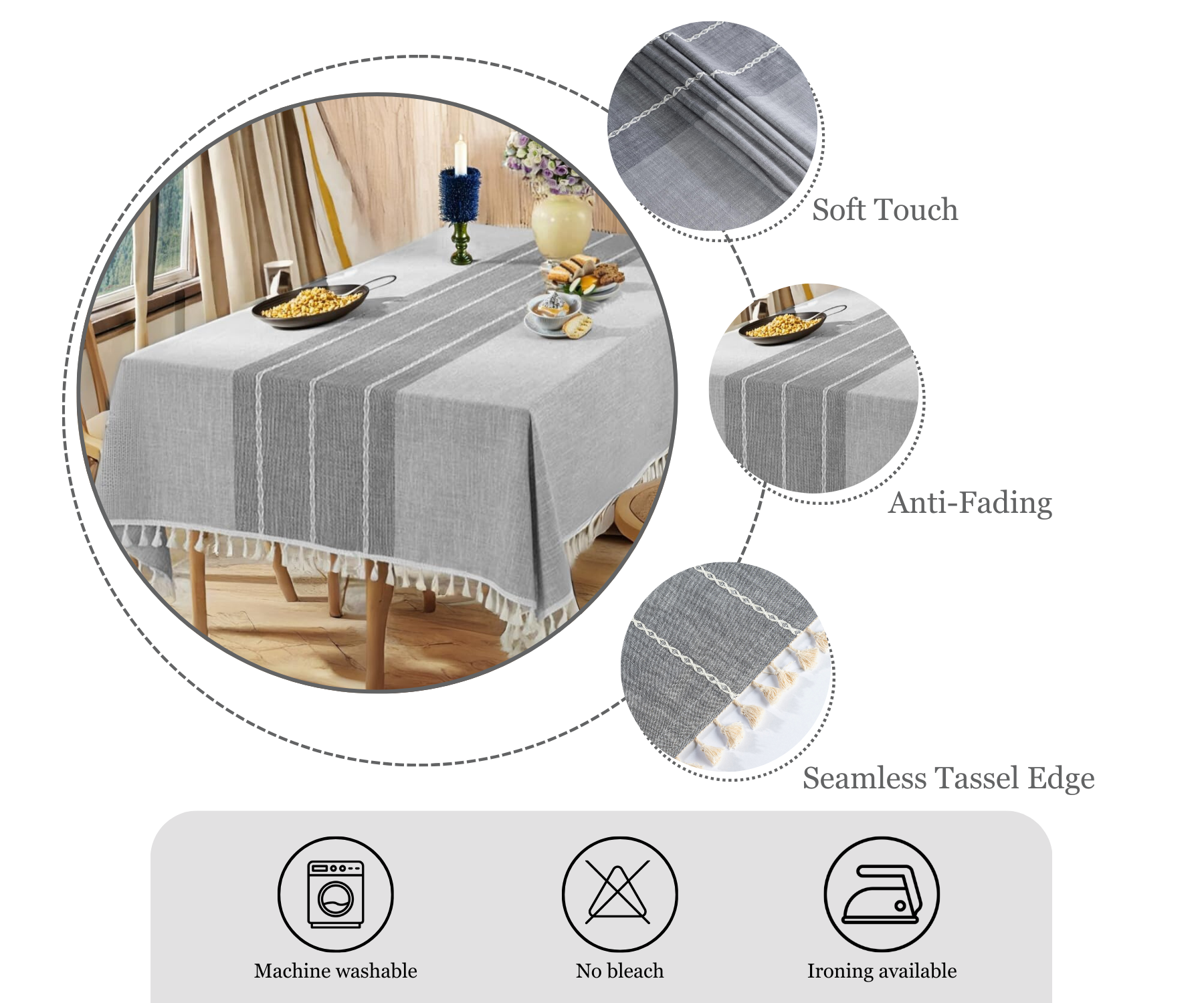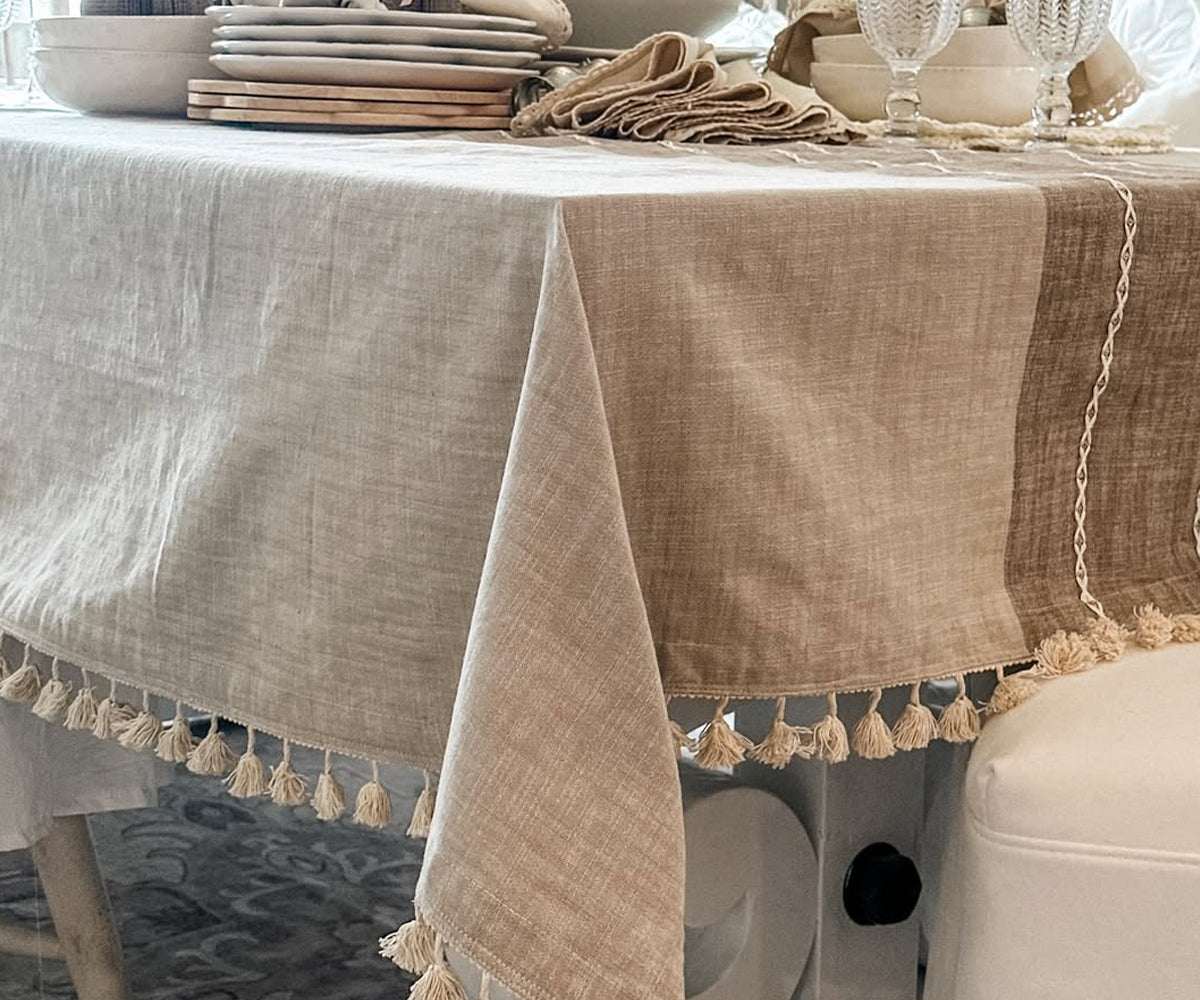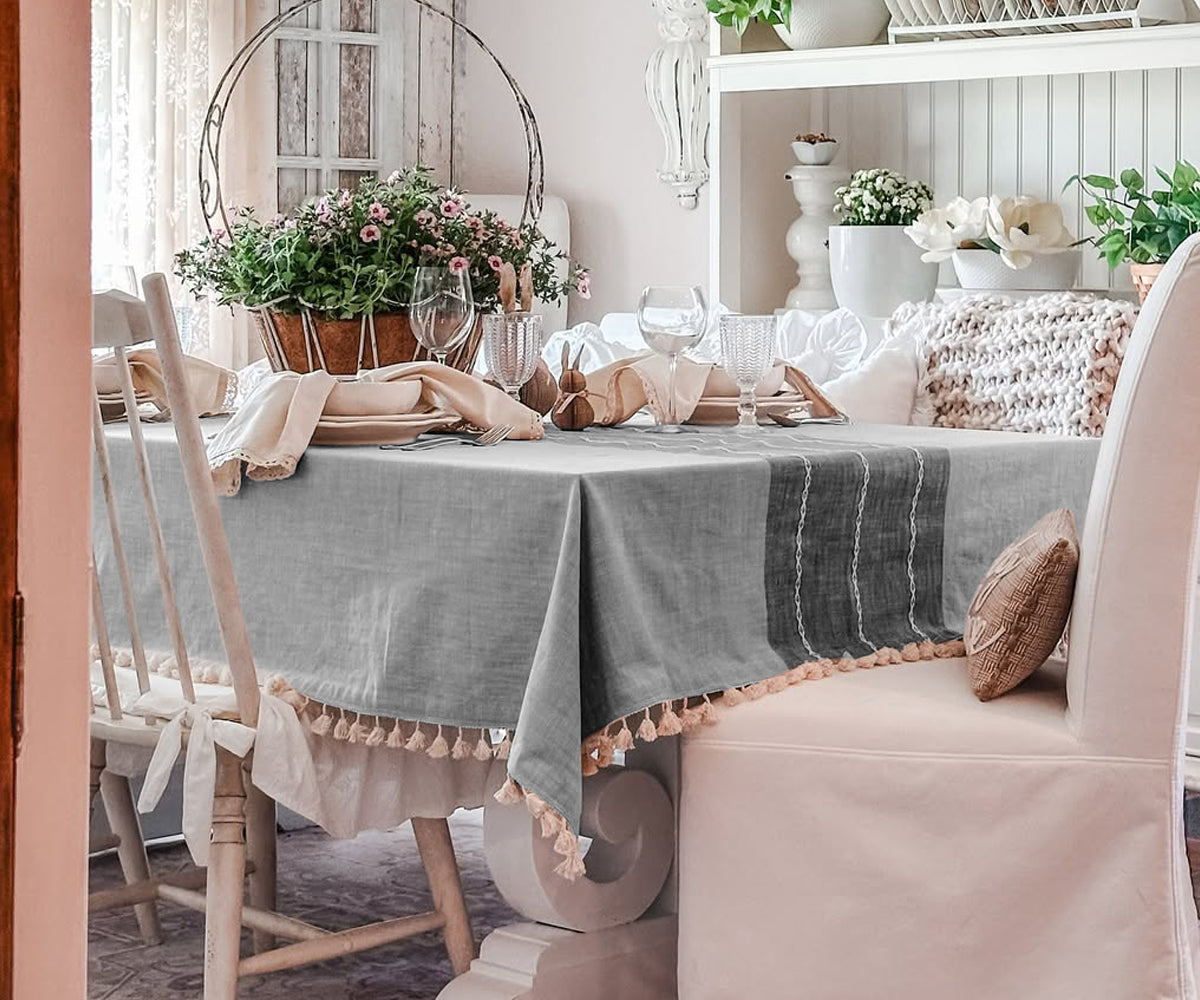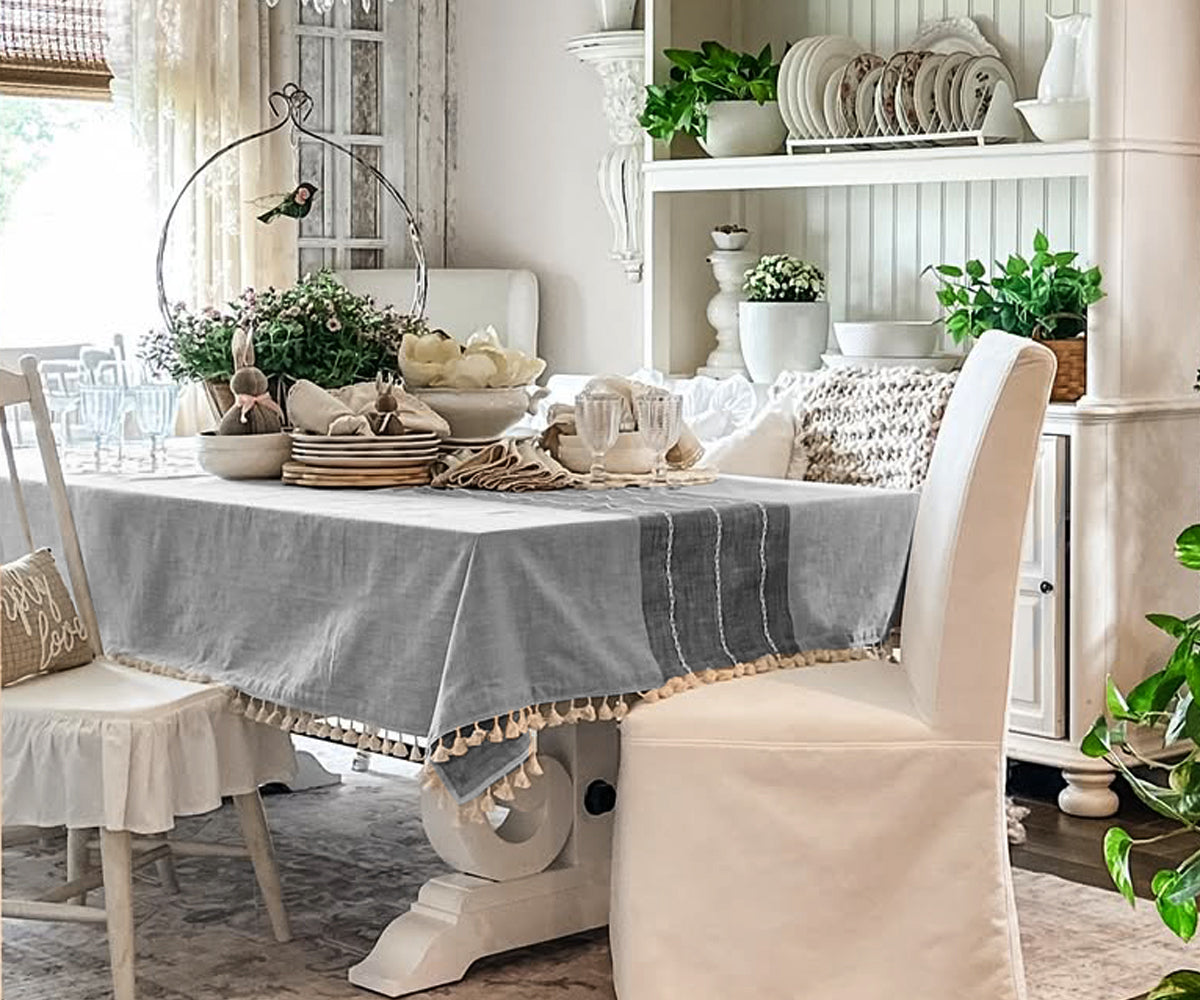1. Ancient Origins of Table Linens
Long before formal dining etiquette existed, people used table linens to keep dining spaces clean. In ancient Egypt, Greece, and Rome, wealthy families used fine fabrics like linen to cover dining tables. These early tablecloths were a sign of status and refinement.
-
Romans and Napkins: The Romans introduced napkins, known as mappae, which guests carried to meals. They used them to wipe their hands and mouths, much like we do today.
-
Medieval Banquets: During medieval times, large feasts were common, and people used long tablecloths to protect wooden tables. These table linens also served as a communal napkin, where guests wiped their hands.
As dining etiquette evolved, so did the use of table linens.
2. The Birth of Formal Dining Etiquette
As societies became more structured, proper dining etiquette became important. During the Renaissance period, fine dining etiquette became a mark of sophistication. Table linens became more decorative, with embroidered tablecloths and beautifully folded napkins.
-
Dining Etiquette in the 17th Century: European aristocrats followed strict rules about how to set the table. Silverware placement, napkin folding, and table settings became part of formal dining etiquette.
-
The Golden Age of Fine Dining: By the 18th and 19th centuries, Dining Etiquette 101 was an essential lesson for upper-class families. People used embroidered placemats, elegant table runners, and high-quality table linens to create luxurious dining spaces.

During this time, American dining etiquette also developed, influenced by European traditions.
3. Dining Etiquette in Modern Times
Today, fine dining etiquette is still practiced, but casual dining has also become popular. Whether in a formal setting or a simple family dinner, table linens remain essential for a stylish dining experience.
What Is Proper Dining Etiquette Today?
-
Use of Tablecloths: A clean and well-placed tablecloth sets the tone for a refined meal.
-
Napkin Etiquette: Place your napkin on your lap before eating. Use it to wipe your mouth gently.
-
Table Setting Rules: Forks on the left, knives and spoons on the right. Plates are centered, and a table runner adds elegance.
-
Placemats for Organization: Using placemats helps define each person’s dining space and keep the table clean.

While formal dining etiquette still exists, modern dining is more relaxed. However, knowing these basics of dining etiquette 101 is always helpful.
4. Why Is Dining Etiquette Important?
Dining etiquette is more than just a set of rules—it creates a comfortable and respectful dining atmosphere. Whether at a fine dining restaurant or a casual family meal, following good table manners helps make the experience pleasant for everyone.
Benefits of Following Proper Dining Etiquette
-
Promotes Cleanliness - Using napkins and table linens keeps the dining area tidy.
-
Encourages Organization - Proper table settings make meals more enjoyable and structured.
-
Reflects Politeness - Good manners show respect for fellow diners.
In professional settings, fine dining etiquette is important, especially during business meals where first impressions matter.
Golden Rules of Dining Etiquette
-
Always place your napkin on your lap before eating.
-
Chew with your mouth closed and avoid talking while eating.
-
Use utensils properly and follow the correct table setting.
By practicing these simple rules, dining becomes a refined and enjoyable experience for everyone.
5. The Role of Table Linens in Dining Today
Even in modern dining, table linens remain an important part of home decor. Using high-quality fabrics like cotton and linen enhances the dining experience.
How to Elevate Your Dining Space with Table Linens
-
Choose a High-Quality Tablecloth - A well-chosen tablecloth creates a stylish and inviting dining space.
-
Use Napkins for a Polished Look - Linen napkins add an elegant touch to both casual and formal settings.
-
Add Placemats for Organization - Placemats help keep the table clean and define each diner’s space.
-
Incorporate a Table Runner - A table runner adds a decorative element and completes the table setting.

The history of table linens shows how dining etiquette has evolved. From ancient civilizations to modern fine dining etiquette, table linens have always played an important role in dining culture. Whether you are following formal dining etiquette or simply enjoying a family meal, table linens help create an elegant and comfortable atmosphere.
Investing in high-quality table linens not only enhances your dining space but also keeps traditions alive. Explore a variety of beautiful tablecloths, napkins, placemats, and table runners from All Cotton and Linen to add elegance to your table!

